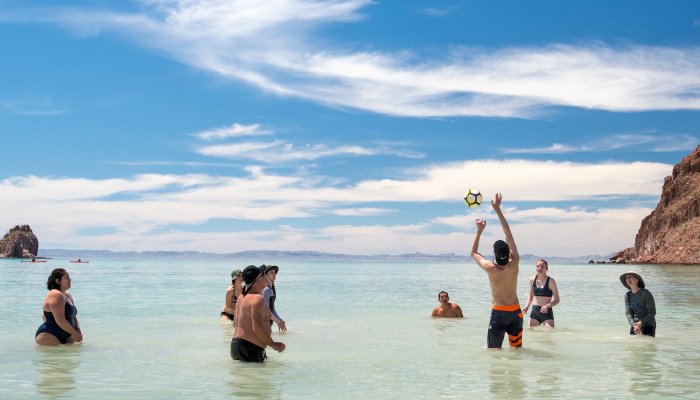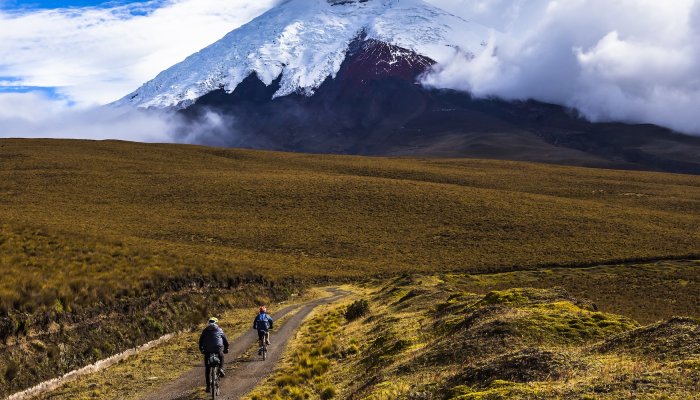Tips for Planning a Well Balanced Trip
In an era where many travel with a time-scarcity mindset, aiming to squeeze as much as possible into each day, slow travel offers a refreshing alternative. Instead of racing through a checklist of sights, slow travel invites us to pause, letting go of strict schedules to foster deeper, more meaningful connections. By focusing less on time and more on presence, travelers can create a richer experience, connecting with places and people beyond surface-level encounters.
This isn’t about abandoning structure altogether but rather planning an itinerary that leaves room for spontaneity and discovery. When we ease up on the rush and allow each place to reveal its unique rhythms, travel becomes far more fulfilling. Curious how to make this balance work for you? Read on for tips on planning a well-balanced itinerary.
Embrace quality over quantity
First things first - a well thought out travel itinerary is all about prioritizing quality over quantity. While the temptation may be to pack in as many destinations and activities as possible during a trip, this often leads to a feeling of being rushed, with little opportunity to really embrace what you are experiencing.
Slow travel recognizes the value in slowing down, being more selective, and really immersing yourself in experiences that are meaningful and will leave a lasting impression. By selecting fewer activities and destinations, you’re allowing yourself to connect with the local culture and uncover hidden gems that would otherwise go overlooked.
Rather than skimming the surface at a dozen different places, focus on exploring one or two locations in depth - get to know the people, sample the local cuisine, and uncover the unique character that makes each destination special. A well balanced trip focuses on the quality of an experience, not the quantity of stamps in your passport.

Incorporate flexibility into your itinerary
When planning an itinerary, it's important to maintain a certain level of flexibility, rather than rigidly adhering to a packed schedule of activities. Trying to cram too many sights, experiences, and destinations into a limited timeframe can lead to a stressful, frenzied experience as you find yourself constantly rushing from one place to the next.
Instead, build in ample breathing room between activities so you can linger a little longer at a place that interests you, rather than feeling pressured to race off to the next. A go-with-the-flow approach allows you to be more present and adaptable, adjusting your plans as needed based on factors like weather, crowds, your energy levels, or discoveries you make along the way.
By being flexible with your travel plans, you can also embrace spontaneous experiences that may arise throughout the day. In doing so, you open yourself up to unexpected discoveries and unique interactions that can provide a more authentic and immersive journey. It's in these unplanned moments that you're most likely to learn something new or have an eye-opening experience that you’ll remember for years to come.

Follow your curiosity, not the crowds
When visiting a new city or destination, it can be tempting to simply follow the well-worn tourist trail and tick off the most iconic landmarks and attractions from a “must-see” travel list. However, it's important to ask yourself whether you're genuinely interested in these famous spots or if you're just feeling obligated to see them because that's what everyone else does.
Instead of automatically gravitating towards the tourist traps, try to approach your travels with a more open and curious mindset. That might mean foregoing popular sights in favor of hidden gems or seeking out lesser-known ways to experience even the most famous landmarks and destinations.
For example, rather than joining the hordes of tourists jostling for the quintessential photo of the Eiffel Tower, consider taking a leisurely stroll through a nearby neighborhood or park to gain a fresh perspective. Or, if you’re trying out a new adventure activity, such as rafting or rails-to-trails cycling, look at lesser-known rivers and routes rather than gravitating solely to the most famous ones.
By being willing to step off the beaten path, you'll not only avoid the stress and disappointment of overcrowded tourist attractions, but you'll also create memories that are tailored to your own interests and travel style. The most rewarding journeys often come from forging your own path, rather than simply following the well-trodden one.

Seek out local experiences
Discovering new ways of living is one of the most impactful parts of traveling and something that is best achieved by seeking out local experiences. Immersing yourself in the authentic culture and daily life of a destination is a much more enriching and memorable way to experience it compared to just ticking off sights.
By interacting with locals, you'll gain a deeper understanding of the area's traditions, cuisine, and values. Take the time to wander down side streets, pop into family-owned shops, and try hole-in-the-wall eateries that locals frequent. Not only will you discover little-known gems you'd never find in a guidebook, but you'll also create more genuine connections with the people and place.
When you engage with the local community, you open yourself up to new perspectives, customs, and conversations that can truly transform your travel adventures. Rather than merely observing from the sidelines, seeking local experiences allows you to become a part of the community, even if just for a short time.

Consider a day with a local tour guide
Local tour guides are invaluable for experiencing the hidden gems and lesser-known aspects of a destination. They bring unique insights into the culture, communities, cuisine, and arts that may not be covered in guidebooks. A knowledgeable guide can help you plan a day tailored to your interests—whether you’re drawn to local markets, street art, or a quiet historical site off the beaten path. Not only does a guide enhance your understanding of the area, but they also offer stories and perspectives that reveal a deeper layer of local life, fostering a sense of connection that’s hard to achieve otherwise.
Additionally, spending time with a local guide often leads to spontaneous encounters, like meeting artisans at work or trying regional foods unique to the area. These unscripted moments allow you to let go of the clock, enjoying the place and people in a more meaningful, relaxed way.

Balance exploration and rest
Crafting a balanced itinerary is about striking a careful balance between the exhilaration of discovery and the necessity of rest and reflection. It's crucial to pace yourself and carve out intentional time for quiet contemplation. After all, the true magic of travel often lies not just in the places you visit, but in the internal journey you undertake.
As you discover new sights or engage in new experiences, make sure to periodically pause, take a deep breath, and simply be present in the moment. Observe your surroundings with all your senses, without the need to constantly document them through imagery or share your experiences online.
If you struggle to make time for reflection, the practice of journaling is a great way to start. It simply means writing down your thoughts about what you have experienced on your travels, as well as what you have learned about the local culture and way of life. This quiet time for introspection will not only help you process your experiences more deeply, but will also provide a much-needed respite from the frenetic pace of exploration.
Slowing down to experience a whole lot more
Ultimately, a balanced trip is about being present, engaging your senses, and allowing yourself to be transformed by the people and places you encounter. The beauty of the movement’s ethos lies in its ability to rekindle the very essence of why we travel in the first place - to broaden our horizons and to return home with a deeper understanding of the world and our place in it.
By crafting (and embracing) a slow travel itinerary, you'll return home feeling rejuvenated and inspired, and that is often more valuable than simply having seen a famous sight in person or completed a so-called “bucket list” activity. In an age of frenetic travel and instant gratification, the slow travel movement offers a profoundly restorative antidote, reminding us to savor the journey, not just the destination.
If you are looking for help planning a custom trip, we are here to help!




